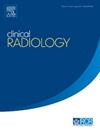Radiomics for lung cancer diagnosis, management, and future prospects
IF 2.1
3区 医学
Q2 RADIOLOGY, NUCLEAR MEDICINE & MEDICAL IMAGING
引用次数: 0
Abstract
Lung cancer remains the leading cause of cancer-related mortality worldwide, with its early detection and effective treatment posing significant clinical challenges. Radiomics, the extraction of quantitative features from medical imaging, has emerged as a promising approach for enhancing diagnostic accuracy, predicting treatment responses, and personalising patient care. This review explores the role of radiomics in lung cancer diagnosis and management, with methods ranging from handcrafted radiomics to deep learning techniques that can capture biological intricacies.
The key applications are highlighted across various stages of lung cancer care, including nodule detection, histology prediction, and disease staging, where artificial intelligence (AI) models demonstrate superior specificity and sensitivity. The article also examines future directions, emphasising the integration of large language models, explainable AI (XAI), and super-resolution imaging techniques as transformative developments. By merging diverse data sources and incorporating interpretability into AI models, radiomics stands poised to redefine clinical workflows, offering more robust and reliable tools for lung cancer diagnosis, treatment planning, and outcome prediction. These advancements underscore radiomics’ potential in supporting precision oncology and improving patient outcomes through data-driven insights.
放射组学用于肺癌的诊断、治疗和未来展望
肺癌仍然是全球癌症相关死亡的主要原因,其早期发现和有效治疗构成了重大的临床挑战。放射组学,从医学影像中提取定量特征,已经成为提高诊断准确性、预测治疗反应和个性化患者护理的一种有前途的方法。这篇综述探讨了放射组学在肺癌诊断和管理中的作用,其方法从手工制作的放射组学到可以捕捉生物学复杂性的深度学习技术。重点强调了在肺癌治疗的各个阶段的关键应用,包括结节检测、组织学预测和疾病分期,其中人工智能(AI)模型表现出优越的特异性和敏感性。文章还探讨了未来的发展方向,强调了大型语言模型、可解释人工智能(XAI)和超分辨率成像技术的集成,这些都是变革性的发展。通过合并不同的数据源并将可解释性纳入人工智能模型,放射组学有望重新定义临床工作流程,为肺癌诊断、治疗计划和结果预测提供更强大、更可靠的工具。这些进步强调了放射组学在支持精确肿瘤学和通过数据驱动的见解改善患者预后方面的潜力。
本文章由计算机程序翻译,如有差异,请以英文原文为准。
求助全文
约1分钟内获得全文
求助全文
来源期刊

Clinical radiology
医学-核医学
CiteScore
4.70
自引率
3.80%
发文量
528
审稿时长
76 days
期刊介绍:
Clinical Radiology is published by Elsevier on behalf of The Royal College of Radiologists. Clinical Radiology is an International Journal bringing you original research, editorials and review articles on all aspects of diagnostic imaging, including:
• Computed tomography
• Magnetic resonance imaging
• Ultrasonography
• Digital radiology
• Interventional radiology
• Radiography
• Nuclear medicine
Papers on radiological protection, quality assurance, audit in radiology and matters relating to radiological training and education are also included. In addition, each issue contains correspondence, book reviews and notices of forthcoming events.
 求助内容:
求助内容: 应助结果提醒方式:
应助结果提醒方式:


